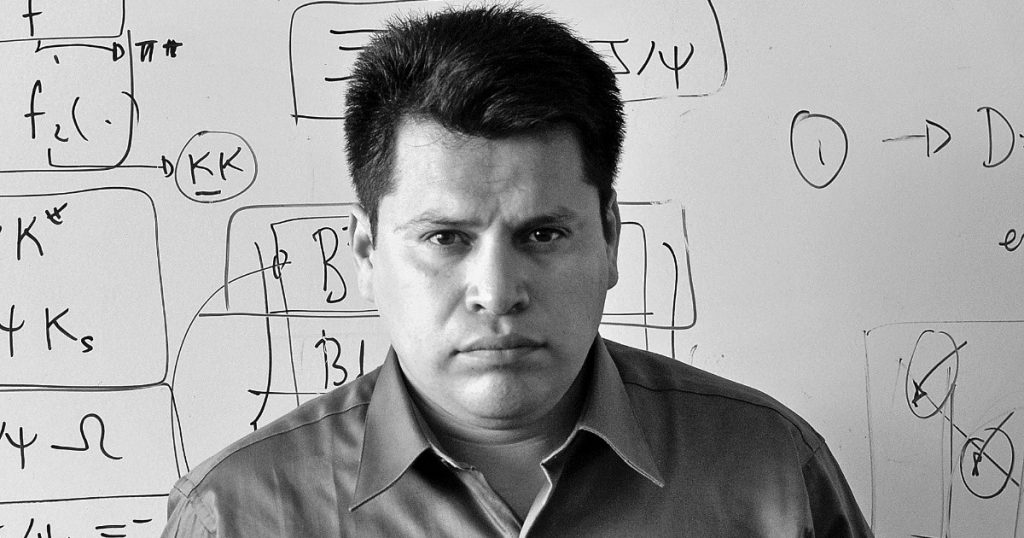In Mexico, 60% of STEM study programs do not meet these criteria

Despite the fact that the Organization for Economic Co-operation and Development (OECD) lists Mexico among the top five countries where more students are choosing fields in science, technology, engineering and mathematics, also known as STEM careers (for its English acronym) at the same time, companies have reported a shortfall in Find trained staff.
This fact, combined with an interest in understanding the relationship between these areas with the digital economy, generated a fundamental question for researcher Eduard de la Cruz Borillo and his student Yara Pérez Maldonado within the PhD in Scientific and Technological Development of Society, Center for Research and Advanced Studies of the National Polytechnic Institute (Cenvestaf).
How are we in STEM fields? At first they found that there were no uniform standards for classifying these jobs, which made them wonder if the subjects taught were really scientific.
In an interview with El Economista, De la Cruz Burelo explained that what appears to be basic does not have a single answer, but it is not just a national problem, as many countries lack standards that allow analysis. Even the OECD when it asks for information to generate statistics about these areas, it only asks how many STEM majors you have, how many students and how many graduates, but there is no standard that defines what STEM is, so each country decides what to do. send.
“In Mexico there are professional catalogs, created by the National Association of Universities and Higher Education Institutions (ANUIES). All the names and contents of the programs are registered, but there is no classification that says this is STEM and this is not.
According to the researcher, those who in their judgment created a commission that does a full study on this type of profession are the United States and the United Kingdom. For example, the National Science Foundation (in the United States) relies specifically on definitions of who should study a STEM profession and what should prevail in the content of its programs, whether it is mathematics, engineering, science or technology, i.e. hard science. Despite this, “the criteria by which these functions include are long and dependent, not on something standardized, so reliable international comparisons are difficult to make.”
However, based on this analysis, experiments and data from ANUIES, what was done was to propose criteria for properly classifying STEM fields and to conduct a review to see which jobs fall within these reference ranges.
This lack of homogeneity in the classification is reflected in the fact that 60% of the study programs considered under the STEM category do not meet the criteria for this, that is, they are classified by name only. “We have come to realize that in some titles the word engineering, mathematics or technology is used and this is puzzling because when reviewing the study programme, it turns out that it is more about orientation towards management and organisation, which constitute human resources in other managerial and managerial areas or social skills, which are essential Of course, but if someone is considering a STEM-type career, these methods will not achieve the goal.”
Suggestions from the academy
Dr. de la Cruz Borillo, who has been involved in research on the impact of science on society through this PhD, stresses that for a student in the short term, the most important thing should be to look at the content of the program and that at least 50% of the subjects focus on difficult topics .
On the other hand, in a more systematic and medium-term way, there is a need to create a coherent standard for defining what a STEM profession is. For this reason, what this task force suggests is to build a list of occupations that have specifications to determine their contents and whether they meet the required skills.
“This is actually easy to do, we have a solid base with ANUIES data, so we can improve our ability to respond, see ourselves more specifically in these jobs, and most importantly, respond to the job offer efficiently.” For its part, at the international level, it can be the OECD that begins to identify some of the fundamental factors.
The next step for the research team will be to prepare a proposal on how to be able to determine the type of topics to be presented in each field so that there is a minimum preparation that the student will be allowed to be in when leaving the educational system. The world works without fear.
What is STEM and why is it important?
STEM is an acronym consisting of the first letters of the words that translate in Spanish as: science, technology, engineering, and mathematics.
Within these four areas, there are many undergraduate majors, for example: biotechnology, computer science, communications, robotics, electronic engineering, statistics or physics.
As more technological products and services are consumed, with more computational and automated resources, it is not surprising that the professionals most sought after by companies are scientific and technical profiles, such as those formed in these professions.

“Future teen idol. Hardcore twitter trailblazer. Infuriatingly humble travel evangelist.”










